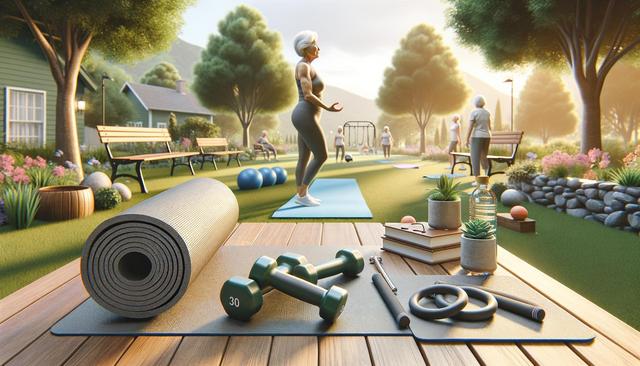Why Staying Active Matters for Older Adults
As people age, maintaining physical activity plays a crucial role in preserving overall health and independence. Regular movement can help reduce the risk of chronic illnesses such as heart disease, arthritis, and diabetes. It also supports better balance, flexibility, and mental well-being. For seniors, the goal isn’t intense exercise but rather staying consistently active in ways that align with their fitness levels and medical conditions. Encouragingly, more communities and fitness programs are now offering senior-friendly fitness options that make it easier than ever to stay engaged and mobile.
Importantly, physical activity also contributes to cognitive health. Studies have shown that regular exercise can delay or reduce the risk of cognitive decline. For many seniors, participating in fitness programs provides not only physical benefits but also a sense of routine, purpose, and social connection, all of which are significant contributors to emotional wellness. This holistic approach to health is one reason why staying active can be so transformative in later years.
Low-Impact Activities That Make a Difference
Low-impact exercise options are ideal for seniors because they promote movement without putting undue stress on joints or muscles. These activities are designed to improve strength, flexibility, and endurance while reducing the risk of injury. Some of the most popular low-impact exercises among older adults include:
- Walking – a simple and effective way to stay active that can be done almost anywhere
- Water aerobics – great for joint relief and cardiovascular fitness
- Chair yoga – promotes flexibility and mindfulness while accommodating limited mobility
- Stretching routines – help maintain range of motion and prevent stiffness
These activities can be performed independently or as part of a group class, and many senior centers and community organizations now offer them regularly. Choosing the right low-impact activity depends on individual interests and physical ability, but even short daily sessions can have considerable health benefits over time.
Group Classes and Community Engagement
Group fitness classes specifically designed for older adults are becoming increasingly popular. These classes often focus on balance, mobility, and core strength, all of which are essential for fall prevention and safe daily movement. Being part of a group setting offers a social element that helps reduce isolation—a common concern among seniors.
Community centers, local gyms, and senior living facilities often host classes such as:
- Gentle tai chi
- Senior-focused dance classes
- Modified Pilates
- Balance and coordination drills
These group settings create an encouraging environment where participants feel motivated and supported. Instructors are typically trained to work with older adults and can offer modifications to suit different fitness levels. This approach ensures that classes are inclusive and adaptable, making it easier for seniors to participate regardless of their current health status.
Technology and At-Home Fitness Options
Thanks to advancements in technology, seniors now have more ways than ever to stay active from the comfort of their homes. Virtual fitness classes and fitness apps tailored for older adults provide flexibility and convenience. These tools are especially useful for those who may have transportation challenges or prefer to exercise in private.
Some features of these digital platforms include:
- Instructional videos with modified movements
- Progress tracking to monitor improvements
- Reminders and schedules to build routine
- Community forums for motivation and support
Smart devices and wearable fitness trackers can also help seniors keep an eye on their steps, heart rate, and sleep patterns. These tools can be motivating and help users stay on track with their wellness goals. While technology may seem intimidating at first, many platforms are designed with senior-friendly interfaces, making them easy to navigate and engage with.
Tips for Getting Started Safely
Before beginning any new fitness routine, it’s important for seniors to consult with a healthcare provider, especially if they have existing medical conditions. Starting slow and gradually increasing intensity helps prevent injury and builds confidence. Here are a few tips to help seniors get moving safely:
- Warm up before and cool down after each session to protect muscles and joints
- Stay hydrated throughout physical activity
- Wear appropriate footwear for support and comfort
- Listen to your body and rest when needed
- Set realistic and attainable goals
Consistency is more important than intensity. Even a 15-minute walk each day can lead to noticeable health benefits over time. The key is to find enjoyable activities that can be sustained regularly. Whether it’s dancing, gardening, or a structured exercise class, the right fitness routine contributes to a more active, independent lifestyle.
Supporting a Healthier, More Active Lifestyle
As seniors are getting active again, the availability of inclusive, accessible fitness options is making a positive impact on aging communities. From low-impact workouts and group classes to at-home virtual sessions, there’s a wide range of choices that support different interests and mobility levels. Staying active helps older adults maintain independence, improve mental and physical health, and enjoy a more fulfilling lifestyle. By exploring senior-friendly fitness options and listening to their bodies, older adults can take meaningful steps toward long-term well-being.




Leave a Reply